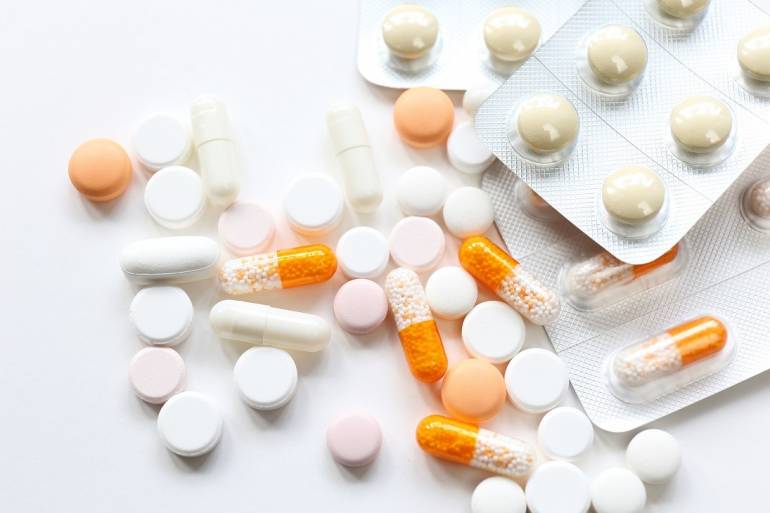A healthy liver is necessary to keep the entire body in good condition. In the human liver there are almost 500 different processes going on simultaneously, which enable other organs to work properly. It is involved in the metabolism of proteins, sugars and fats, synthesis of blood clotting factors, production of bile, storage of iron and vitamins, removal of harmful metabolic products and foreign and toxic substances from the body. Liver problems should not be taken lightly, as they can become the cause of other serious ailments.
Liver diseases – how to recognize them?
A signal that there is something wrong with the liver may be pain and tenderness on the right side of the epigastrium. Sometimes you can feel with your fingers in this area that the liver is enlarged. If the pain lasts a long time, occurs frequently, or if symptoms such as:
- Yellowing of the skin and eyeballs (jaundice),
- Itching of the skin that does not go away despite the use of soothing agents,
- discolored stools,
- Bloody or tarry stools,
- chronic fatigue,
- nausea,
- loss of appetite,
seek medical advice.
Different liver diseases have similar symptoms, so additional diagnostic tests will be necessary to fully identify the problem. These include general blood and urine tests, determination of liver enzymes – AspAT and ALT, determination of bilirubin levels, abdominal ultrasound or liver biopsy.
Hepatitis – where does it come from?
Hepatitis is one of the most common diseases of this organ, either acute or chronic in nature. It can be caused by viral, bacterial or protozoan infections. Its cause can also be contact with toxic compounds (toxic hepatitis). The causative agents of hepatitis are a relatively broad list of potentially harmful compounds, including.
- certain over-the-counter medications (paracetamol, aspirin, ibuprofen, naproxen) – when taken too often, in too large doses, or when combined with alcohol,
- Certain prescription drugs (anabolic steroids, isoniazid, ketoconazole, valproic acid, azathioprine, anticholesterol drugs of the statin group),
- Some herbal dietary supplements (containing extracts of spittlebush, valerian, common rhodiostrum, buttercup, mistletoe),
- Toxins of poisonous fungi,
- chemicals used in industry (vinyl chloride, carbon tetrachloride, polychlorinated biphenyls, pesticides).
A special case of toxic hepatitis is alcoholic hepatitis, which affects long-term alcohol abusers. Numerous studies have shown that men, who consume an average of 60-80 g of ethanol per day for more than 10 years, are most at risk of developing it. For women, the safety threshold is lower at 20 grams of ethanol per day for 10 years. It should be added that 60 grams of ethanol is a relatively small amount – it is contained, for example, in 3 standard (500 ml, 5%) bottles of beer, about 4 glasses (glasses) of wine or about 200 ml of vodka.
The severity of hepatitis depends on the type of damaging agent, time of exposure, gender, age, general health and genetic conditions. Sometimes it runs without obvious symptoms, resolves quickly and does not lead to complications. The liver has a strong ability to regenerate, so cells damaged by acute inflammation can be replaced by new ones. Liver function then remains unchanged. The most dangerous is exposure to toxins in large doses and for a long time. The mechanism of restoration can then be disrupted. Instead of healthy cells, scar tissue appears at the site of damage. Such a condition is cirrhosis of the liver. Its ability to carry out biochemical processes then becomes limited, which can lead to disruptions in the functioning of other body systems.
A variant of chronic hepatitis is non-alcoholic steatohepatitis. It occurs very rarely. It can develop in people with obesity or high blood triglyceride levels, as a consequence of a diet rich in fat and cholesterol. In the course of this disease, fat deposits are deposited in the liver cells. As a result, an inflammatory reaction can occur, also leading to cirrhosis.
Spotted thistle, cynarin and vitamins for ailing liver
Fibrotic changes in the structure of the liver caused by cirrhosis are irreversible, but with treatment it is possible to stop their progress and prevent possible complications. The most important thing is early recognition of the problem. People with a high risk of developing liver disease can take the right measures even before symptoms appear. Drugs that accelerate the regeneration of liver cells are available over-the-counter, effective and safe to use. As a rule, they are based on natural ingredients. A confirmed effectiveness in the process, which is the regeneration of the liver, has an extract from the husks of the fruits of milk thistle. In it there is a complex of flavonolignan compounds – silymarin. It has been proven that taking preparations with silymarin stabilizes the membranes of liver cells, which reduces the penetration of toxins into them. It also stimulates cell proliferation, inhibits the synthesis of pro-inflammatory factors and reduces fibrosis processes. Thistle preparations also have a weak choleretic and anticholesterol effect. Examples of the drug include Sylimarol 35 and Sylimarol 70. The recommended method of administration is 3 times a day of 1-2 tablets (depending on the dose).
See also: liver support supplements
Even better therapeutic effect can be achieved by administering drugs containing two active ingredients: silymarin and soy phospholipids. An example is the preparation Syliflex. Phospholipids contained in it are involved in the reconstruction of liver cell membranes. This has a positive effect on their stabilization and reduced permeability to toxins. In addition, phospholipids stimulate fat metabolism and prevent liver steatosis. In chronic conditions it is administered 3 times a day 1 tablet, in acute conditions 3 times a day 2 tablets.
Silymarin’s supportive effect is also demonstrated by artichoke extract. It contains the active ingredient cynarin, which stimulates the liver to work and has a cholagogic and cholepoietic effect. Cynarin has also been shown to lower cholesterol levels, especially the LDL (“bad cholesterol”) fraction, and protect the liver from the effects of inflammation. Those with elevated triglyceride and cholesterol levels can reach for Sylicynar, which contains silymarin and cynarin. Recommended dosage: 2 tablets 3 times a day.
All the above-mentioned over-the-counter liver medications require regular use for a period of 2-4 weeks. If after this time the discomfort does not subside or worsens, it will be necessary to consult a doctor, who may extend the treatment for up to 6 months.







